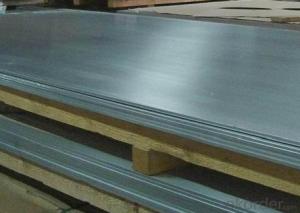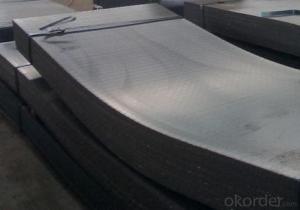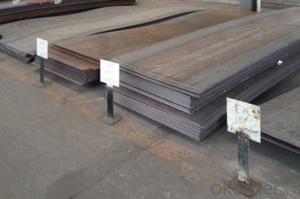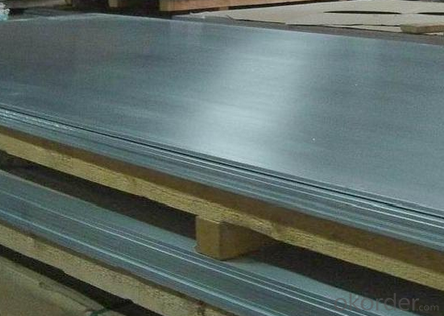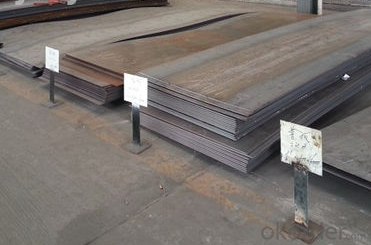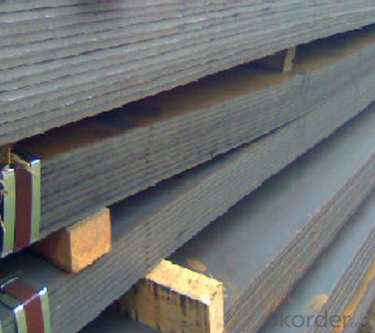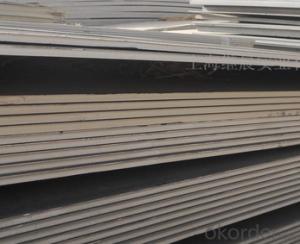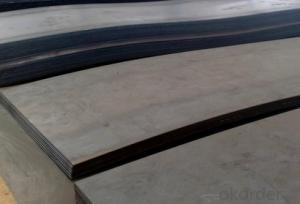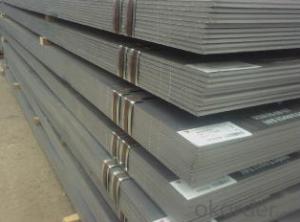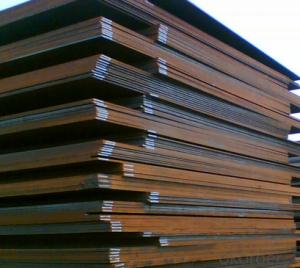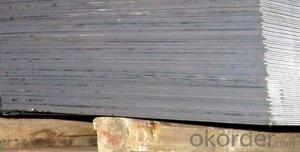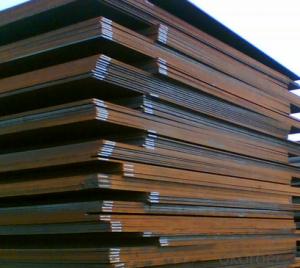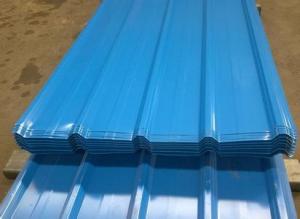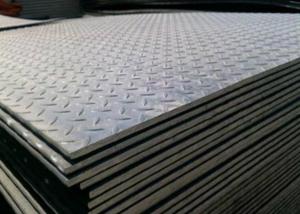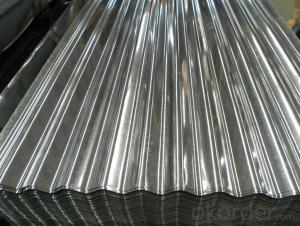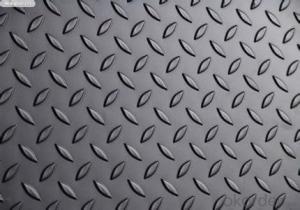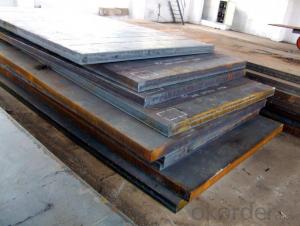Hot Rolled Carbon Steel Plate,Carbon Steel Sheet Q345A, CNBM
- Loading Port:
- Qingdao
- Payment Terms:
- TT OR LC
- Min Order Qty:
- 10 pc
- Supply Capability:
- 30 pc/month
OKorder Service Pledge
OKorder Financial Service
You Might Also Like
Quick Details
| Standard: | AISI, ASTM, GB, JIS | Grade: | Q195,Q235,Q345,A36,C45 | Thickness: | 1.0-30MM |
| Model Number: | Q235,Q195,Q345 | ||||
| Type: | Steel Plate | Technique: | Hot Rolled | Surface Treatment: | Coated |
| Application: | Ship Plate | Special Use: | Silicon Steel | Width: | 30-2000mm |
| Length: | as your requirement | standard: | hot rolled | Surface: | Anti-rust oil |
Packaging & Delivery
| Packaging Details: | seaworthy packages or as customers' require |
| Delivery Detail: | within 15 days after the advance payment |
Hot rolled steel plate
1 carbon steel plate 3mm thick General information
| Product name | Type | Specification | Implementation of GB | ||
| thick | wide | long | |||
| Carbon structural steel | Q195,Q215, Q235A,Q235B, Q235C,Q255, Q275 | 4-120 | 1500-4500 | 6000-12000 | GB/T700-2006 |
| Low-alloy structural steel | Q295,Q345A, Q345B,Q2345C | 4-120 | 1500-4500 | 6000-12000 | BG/T1591-1994 |
| Quality carbon structural stee | 30-50 | 4-120 | 1500-4500 | 6000-12000 | BG/T699-1999 |
| Ship steel | CCSA,CCSB | 4-120 | 1500-4500 | 6000-12000 | materials and welding condition |
| CCSAH32,CCSAH36 CCSDH32,CCSDH36 | 4-120 | 1500-4500 | 6000-12000 | materials and welding condition or GB 712-2000 | |
| Boiler steel | 20g,22Mng, 16Mng,19Mng | 4-120 | 1500-4500 | 6000-12000 | GB 713-1997 |
| Pressure vessel steel | 1622Mng,20R, 15MnVR,15MnVNR | 4-120 | 1500-2700 | 6000-12000 | GB 6654-1996 |
| European standard plate
| S235JR,S235J0, S275JR,S275J0, S275JR2,S355JR, S355J0,S355J2 | 4-120 | 1500-4500 | 6000-12000 | EN 10025 |
| Japanese standard plate | SS400,SS400-B | 4-120 | 1500-4500 | 6000-12000 | JIS G3101-2004 |
2 carbon steel plate 3mm thick detail specification
Material:
A283Gr.D/A573Gr.65,A516Gr65,A516Gr70,A284Gr.D
SS400,SS300,CCSB A36,A32,LRA32,LRB,Q235
Q195,Q235,Q345,SS400,ASTM A36,E235B
Thickness: 4mm-120mm
width: 1500mm-4500mm
Length:2-10m ,accordingly
Thickness | 4-120mm |
Width | 1500-4500mm or as custom's request |
Length | 2-12m,as your requirment |
Technique | Cold rolled or hot rolled |
Surface treatment | Bare, galvanized coated or as customer's requirements. |
Standard | ASTM,EN,GB,JIS,GB |
Material | A283Gr.D/A573Gr.65,A516Gr65,A516Gr70,A284Gr.D SS400,SS300,CCSB A36,A32,LRA32,LRB,Q235 Q195,Q235,Q345,SS400,ASTM A36,E235B |
Terms of Payment | L/C or T/T |
Chemical composition | C≤0.004%;Si≤0.030%; Mn ≤0.17%;P≤0.012%; S≤0.010%; Fe balance |
Delivery Detail | within 30days once receive deposite or confirm L/C |
Packing | Standard export packing,or as requirement |
3 carbon steel plate 3mm thick application:
construction,machinery manufacturing, container manufacturing, shipbuilding, bridge construction. Can also be used to manufacture a variety of containers, the furnace shell, furnace plate, bridge and vehicle static steel plate, low alloy steel plate,shipbuilding plate, boiler plate, pressure vessel plate, pattern plate, tractor parts, automobile frame steel plate and welding components
- Q: Are steel sheets resistant to warping or bending?
- Yes, steel sheets are generally resistant to warping or bending due to their high tensile strength and stiffness. Steel is known for its durability and ability to withstand heavy loads without deforming. However, it is important to note that the resistance to warping or bending can vary depending on the thickness and quality of the steel sheet. Thicker steel sheets tend to be more resistant to bending or warping compared to thinner ones. Additionally, factors such as temperature changes and improper handling or installation can also affect the ability of steel sheets to resist warping or bending. Overall, steel sheets are commonly used in various industries due to their excellent resistance to warping or bending.
- Q: Can steel sheets be used for modular construction?
- Yes, steel sheets can be used for modular construction. The strength, durability, and versatility of steel make it an ideal material for constructing modular buildings. Steel sheets can be easily fabricated, transported, and assembled, allowing for efficient and cost-effective modular construction projects.
- Q: What is the typical lifespan of painted steel sheets?
- The lifespan of painted steel sheets can be influenced by various factors, including the quality of the paint used, the environmental conditions they encounter, and the level of maintenance they receive. Typically, painted steel sheets can endure for about 20 to 40 years. However, if the paint is of superior quality and the sheets are properly cared for, their lifespan can be further extended. To prolong the longevity of painted steel sheets, it is advisable to regularly clean them, inspect for any signs of damage or corrosion, and perform suitable touch-ups or repainting. Additionally, exposure to harsh weather conditions, chemicals, or corrosive environments can also impact the duration of painted steel sheets. Considering these factors and conducting routine maintenance can ensure the extended lifespan of painted steel sheets.
- Q: What is the difference between a perforated and woven steel sheet?
- A metal sheet with holes or perforations evenly spread across its surface is known as a perforated steel sheet. These holes can come in various shapes and sizes, including round, square, or slotted. Perforated steel sheets are commonly utilized in situations where there is a need for airflow, visibility, or drainage, such as in architectural design, filtration systems, and acoustic panels. The primary advantage of perforated steel sheets is their ability to offer these functionalities while still maintaining their structural integrity. Contrarily, a woven steel sheet is created by intertwining steel wires in a specific pattern. This interlacing results in a mesh-like structure where the wires form intersecting horizontal and vertical lines. Woven steel sheets are frequently employed in applications that require strength, durability, and security, like fencing, guarding, and industrial filtration systems. The main advantage of woven steel sheets is their capability to provide a high level of strength and security due to the tightly interwoven wires. In conclusion, the primary distinction between perforated and woven steel sheets lies in their distinctive structures and functionalities. Perforated steel sheets consist of evenly dispersed holes across their surface, offering advantages such as airflow and visibility. On the other hand, woven steel sheets are formed by intertwining steel wires to create a mesh-like structure, providing benefits such as strength and security. The choice between the two depends on the specific requirements of the given application.
- Q: Can steel sheets be formed into complex shapes?
- Yes, steel sheets can be formed into complex shapes through various metalworking processes such as bending, rolling, stamping, and laser cutting. These processes allow the steel sheets to be manipulated and transformed into intricate and custom shapes, meeting the specific design requirements. The malleability and strength of steel make it possible to form it into complex shapes without compromising its structural integrity. These capabilities are widely utilized in industries such as automotive, aerospace, construction, and manufacturing, where complex and precise components are required.
- Q: What does "steel plate 10t" mean in the specification column of engineering material?
- The width of the sheet is 500~1500 mm; the thickness is 600~3000 mm. According to the type of steel sheet, ordinary steel, stainless steel, alloy steel, spring steel, stainless steel, tool steel, heat-resistant steel, bearing steel, silicon steel and industrial pure iron sheet; according to professional use, with drums board, enamel board, bulletproof plate; surface coating and plating, plating with zinc thin plate, tin plate, plating lead sheet, plastic composite plate.
- Q: Can the steel sheets be easily welded?
- Steel sheets can indeed be welded with ease. Joining steel sheets together is commonly achieved through the process of welding. This procedure entails melting the edges of the steel sheets, followed by allowing them to cool and solidify, resulting in a sturdy connection. It is worth mentioning, however, that the ease of welding may vary depending on factors such as the type and thickness of the steel sheets, as well as the expertise and experience of the welder. Furthermore, it is crucial to adhere to appropriate safety measures and welding techniques to guarantee a successful and secure welding procedure.
- Q: Can steel sheets be used for chimneys and flue systems?
- No, steel sheets are not suitable for chimneys and flue systems as they can corrode and deteriorate rapidly due to the high temperatures and corrosive gases generated by the combustion process. It is recommended to use materials specifically designed for chimneys and flue systems, such as stainless steel or ceramic.
- Q: Is galvanized steel plate or iron plate?
- In metallurgy, iron, pure iron, is not available in actual industrial production. Iron is a very active chemical element, which oxidizes rapidly in the air at room temperature. This is like some people say we have not seen the real 'aluminum' exposure to aluminum elements in the air immediately oxidized alumina, so we see in the normal is covered on the surface of alumina aluminum complex, real aluminum and we do not see. The activity of iron is second only to that of aluminum.
- Q: What are the advantages of using steel sheets?
- There are several advantages of using steel sheets. Firstly, steel sheets are highly durable and have a long lifespan, making them cost-effective in the long run. Secondly, steel sheets are resistant to corrosion, rust, and weathering, making them suitable for outdoor applications. Additionally, steel sheets are fire-resistant, providing enhanced safety. They are also versatile and can be easily customized to meet specific design requirements. Furthermore, steel sheets have high strength-to-weight ratio, making them lightweight yet strong. Lastly, steel sheets are recyclable, making them an environmentally friendly choice.
Send your message to us
Hot Rolled Carbon Steel Plate,Carbon Steel Sheet Q345A, CNBM
- Loading Port:
- Qingdao
- Payment Terms:
- TT OR LC
- Min Order Qty:
- 10 pc
- Supply Capability:
- 30 pc/month
OKorder Service Pledge
OKorder Financial Service
Similar products
Hot products
Hot Searches
Related keywords
